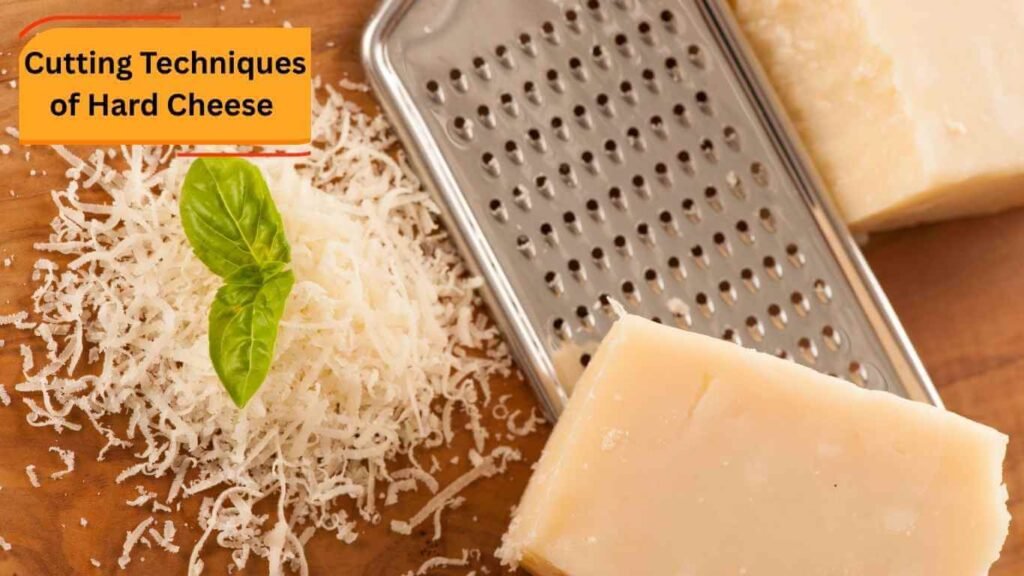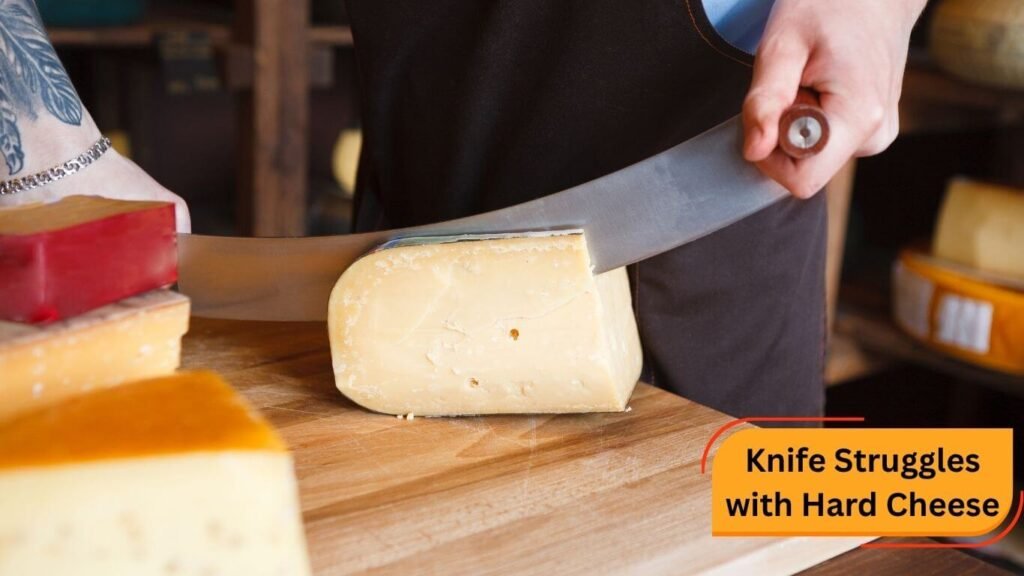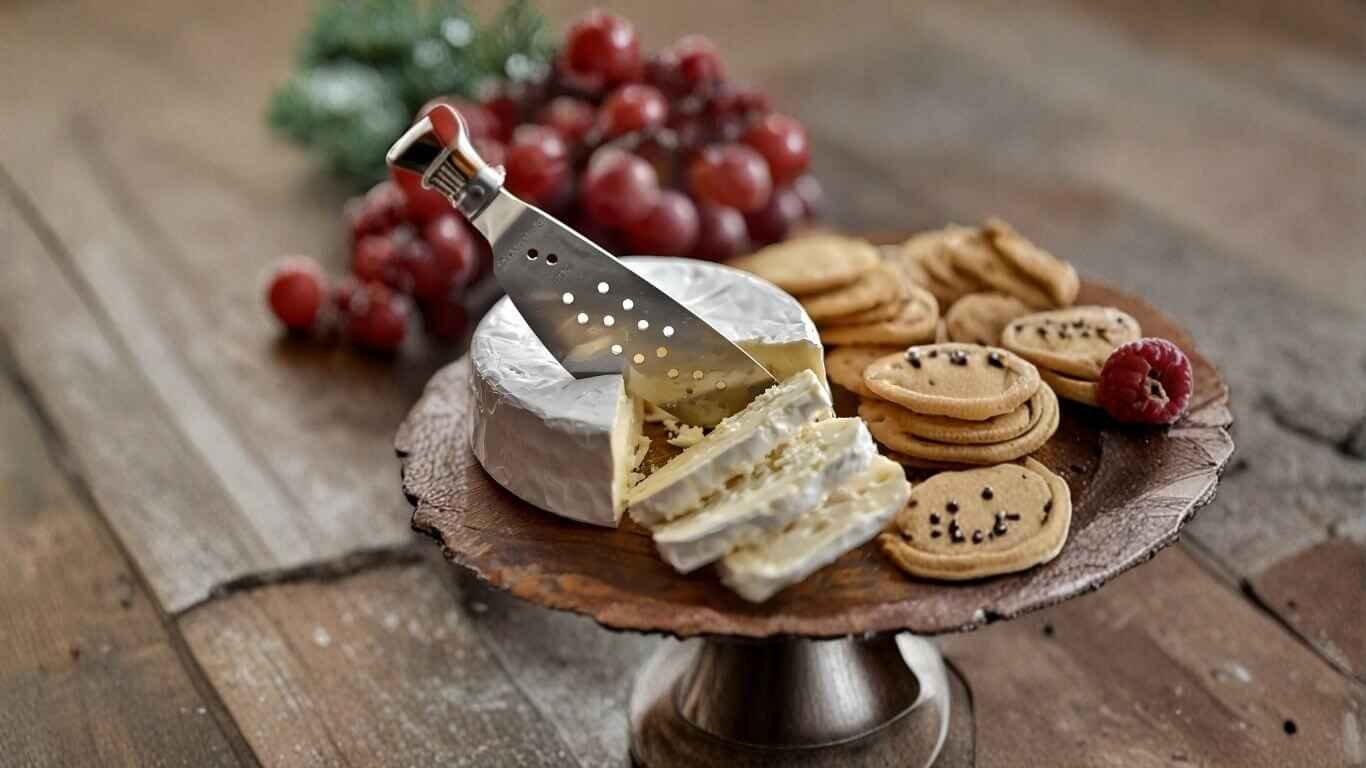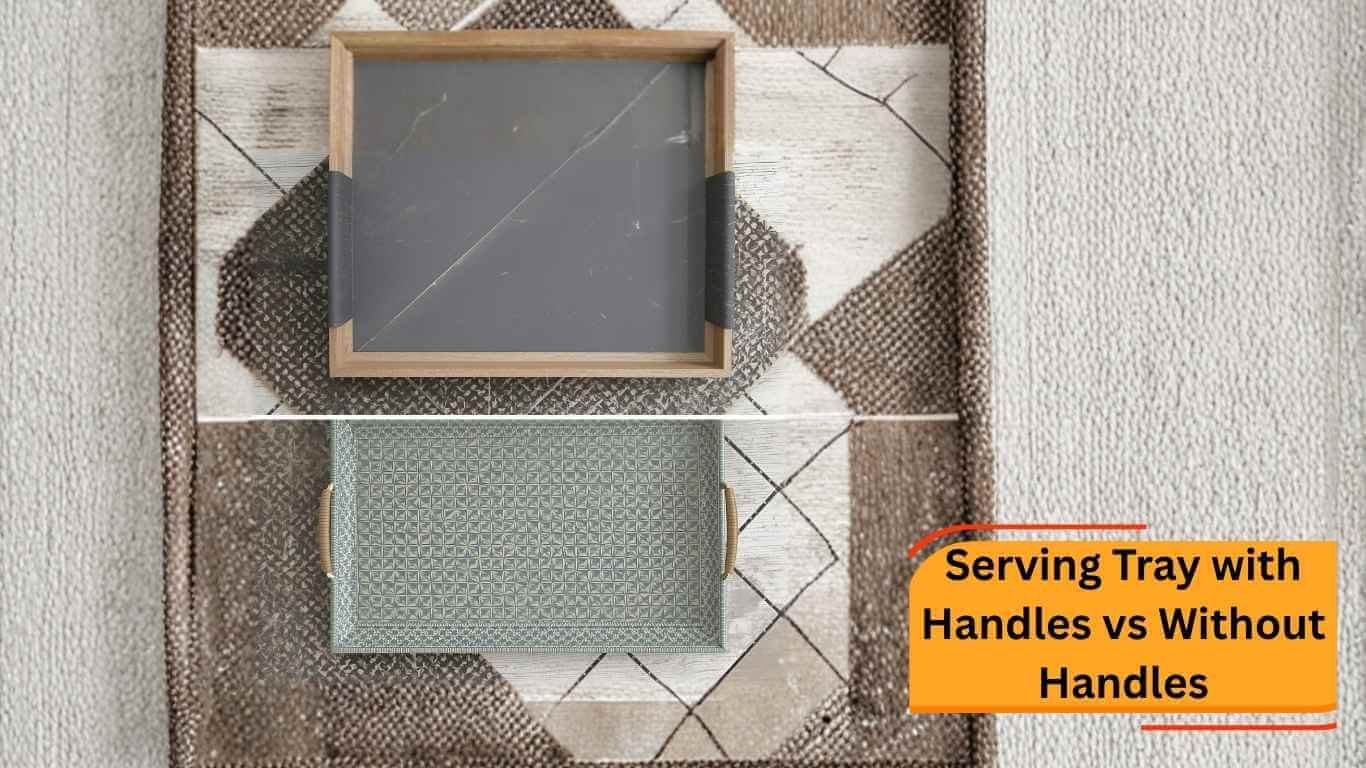When a beautiful wedge of Parmesan crumbles into a pile of jagged, uneven pieces after you try to slice it, there’s a special kind of frustration. As you press down with your chef’s knife, you hope for a clean cut, but the blade sticks, the cheese cracks, and you’re left with a mess. The struggle isn’t just about presentation; it affects your food preparation, portion control, and general enjoyment of the food.
You will learn exactly why standard kitchen knives and other common kitchen tools often fail to cut through hard cheeses like aged Gouda or pecorino. The most important part is that we’ll provide you with clear, actionable solutions to fix this problem forever. With this guide, you’ll learn how to cut hard cheese with confidence and precision every time – whether it’s Parmesan, Swiss cheese, cheddar cheese (which can range from semi-hard to hard), or crumbly blue cheese.
Why Hard Cheese Is So Difficult to Cut
Cutting hard cheese is challenging because of its fundamental structure. As opposed to soft cheese, which is easy to spread with a butter knife or cheese spreader due to its high moisture content, hard cheese is dense, dry, and compact. This is by design, since aging removes water and concentrates flavor, resulting in a firm, crystalline texture that highlights different flavors.
The age of the cheese and the toughness of its rind, which is often strengthened with food-safe additives like calcium chloride, significantly increase the difficulty of cutting it. An aged Parmesan, for instance, develops a rock-hard rind that protects the cheese from contamination. Putting pressure on a standard, thin blade, like the blade of a kitchen knife, will result in something giving. When a knife cannot handle the resistance, the cheese fractures along its natural crystalline fault lines. The result is crumbling, cracking, and uneven slices that home cooks and cheese lovers are all too familiar with.
Understanding why different varieties of cheese have different textures is part of the science of cutting cheese. Semi-hard cheeses, such as young gouda, hold their shape while still being much firmer than soft cheeses; they resist blades similarly, although not as drastically as ultra-aged cheeses. The texture of blue cheese can range from crumbly to creamy, requiring different techniques and tools.
Common Knife Problems
The most common cause of hard cheese cutting issues is the equipment you use and how you use it. Most mistakes are made when using the wrong tool. A kitchen knife or paring knife works great on vegetables or soft cheese, but they struggle with dense blocks. Butter knives or serrated knives will either wedge themselves into the cheese or bend under pressure.
Hard Cheese and the Wrong Knife
It is either possible for a thin blade to wedge itself into the cheese or bend under pressure. It not only makes cutting difficult, but it can also damage your knife as well. Pressure can warp or even snap the blade, making a simple kitchen task a costly one.
Poor handling and dull blades
The task is nearly impossible with a dull blade, even with a suitable knife. It is not possible to bite into the cheese with stainless steel blades when they are not properly maintained or sharpened. Instead, they will slide across the surface or require excessive force to cut. The process is further complicated by poor handling, such as an awkward grip or awkward cutting angle, which leads to messy cuts and waste cheese.
Safety Risks and Wasted Cheese
If you apply extreme force, the knife is more likely to slip. There is a significant safety hazard here. Improper cutting not only puts you at risk of injury, but also wastes a lot of cheese. Especially with expensive cheese such as Swiss cheese or vintage cheddar, crumbled bits and uneven chunks can be hard to portion, so you lose out on every last bit.
Essential Tools for Cutting Hard Cheese
To conquer hard cheese, you need kitchen tools specifically designed for the task. These instruments provide the necessary leverage and force without compromising safety or the integrity of the cheese.
Hard Cheese Knives
These knives are built for durability and power. A hard cheese knife often features a heavy, thick Stainless Steel blade that can withstand significant pressure. Some popular styles include:
- Double-Handle Knife: This large, powerful knife requires two hands to operate, allowing you to use your body weight to drive the blade straight down through large wheels or blocks.
- Dutch Cheese Knife: With a T-shaped handle, this knife allows for a firm grip and downward pressure, making it great for cutting firm wedges, especially in semi-hard cheese.
- Spade or Almond Knife: This small, pointed knife is perfect for breaking off chunks of very hard, crumbly cheeses like Parmesan.
- Wide Spade Knife: This wide, sturdy shape allows you to push with both hands for maximum leverage.
- Fork-Tipped Knife: Useful for serving slices directly and also for piercing blue cheese or cheddar cheese.
- Scandinavian Cheese Slicer: Perfect for semi-hard cheese and even softer forms of Swiss cheese. This kitchen tool glides across the surface for ultra-thin, uniform slices.
Cheese Cleavers and Wires
A cheese cleaver is another excellent option. Similar in shape to a meat cleaver, it has a wide, sturdy Stainless Steel blade that can chop through hard rinds and dense cheese with ease.
For ultra-thin, uniform slices, a cheese wire or wire cheese cutter is invaluable. The thin wire, sometimes made of Stainless Steel or coated for food safety, slices cleanly through the cheese without friction, preventing sticking and crumbling. You’ll often find these gadgets packaged with a cheese board and marked by features like “Free Returns” for added consumer confidence.
Special Cutting Boards and Support Techniques
A sturdy, non-slip cutting board is non-negotiable. A board that slides around on the counter is a recipe for disaster. For extra stability, place a damp paper towel or a non-slip mat under your cutting board. This ensures your cutting surface remains firmly in place while you apply pressure.
A cheese grater can also be a handy kitchen tool for taking thin layers off hard or semi-hard cheese, particularly for garnishing dishes.
Step-by-Step Cutting Techniques
Having the right tools for the job is half the battle. Using them correctly is the other half. For clean, safe, and efficient cutting of hard, semihard, blue, Swiss, and soft cheeses, follow these steps.
Preparing the Cheese
Before you even pick up a Stainless Steel blade, let the cheese rest at room temperature for about 20-30 minutes. Cold cheese is more brittle and prone to cracking, whether it’s cheddar cheese, Swiss cheese, or even softer types. Allowing it to warm up slightly makes it more pliable and easier to slice. This simple step can make a world of difference.
Correct Knife Grip and Leverage
Safety starts with your grip. Hold your hard cheese knife handle firmly with your dominant hand. Place your other hand flat on top of the blade, away from the sharp edge, to apply steady, even pressure. Position your body over the knife so you can use your weight to help drive the cut. Avoid rocking the knife back and forth, as this can cause it to wedge or slip. This is true whether you’re slicing semi-hard, blue cheese, or a block of Swiss cheese.
Using a Wire Cutter, Cheese Slicer, or Mandoline
For perfect, paper-thin slices, a wire cutter or a Scandinavian cheese slicer is your best friend. The former is great for hard and some semi-hard cheeses, while the latter is fantastic for semi-hard cheese and even blue cheese. A mandoline slicer can also work for smaller, manageable blocks of cheese, but be extremely careful and always use the hand guard provided.

Maintenance for Cheese Knives
Your specialized cheese knives and other kitchen tools are an investment, and proper care will ensure they perform well for years to come.
Sharpening and Caring for Hard Cheese Knives
Just like any other knife, a hard cheese knife or a serrated knife, paring knife, or butter knife used for other cheese types needs a sharp edge. Stainless Steel looks great and resists rust but still needs care. Because hard cheese knives are often thicker, they may require a different sharpening angle than your standard kitchen knife. Follow the manufacturer’s instructions or take them to a professional sharpener. Honing the blade regularly will keep its edge between sharpenings.
Cleaning and Storing for Long-Term Performance
Always wash your cheese knives and kitchen tools by hand with warm, soapy water immediately after use. Cheese residue can be corrosive and difficult to remove once it dries, especially on Stainless Steel. Dry them thoroughly to prevent rust, especially if they are made from high-carbon steel. Store them in a knife block, on a magnetic strip, or with blade guards to protect the edges and prevent accidents.
Troubleshooting Cutting Problems
Even with the right kitchen knife, cheese spreader, or other gadgets, you might still run into issues. Here’s how to troubleshoot some common cutting problems, including those with soft cheese, blue cheese, cheddar cheese, and more.
Signs It’s Time to Upgrade Your Knife
If your knife blade bends, if you have to use an excessive amount of force, or if the handle feels loose or unstable, it’s a clear sign you need a better tool. A knife that feels unsafe probably is. Upgrading to a dedicated hard cheese knife, wide spade, or Scandinavian cheese slicer will make the task safer and more enjoyable.
What to Do if Cheese Still Cracks or Knives Stick
If the cheese is still cracking, it might be too cold or aged with high Calcium Chloride content. Let it sit out a little longer. If your knife is sticking, it may be due to friction. Try wiping the Stainless Steel blade with a small amount of neutral oil before cutting. This can help it glide through the cheese more smoothly.
Solutions if Knives or Wires Don’t Work
For exceptionally large or hard wheels of cheese, sometimes the best approach is to score the rind deeply with a small, sharp paring knife. Then, insert two almond-shaped or wide spade cheese knives into the scored line and gently push them apart to split the wheel open. This method works with the cheese’s natural structure instead of fighting against it. For soft cheese or blue cheese, simply switch to a cheese spreader or wire cutter for best results.
Safety Tips
Working with hard cheese and assorted kitchen tools requires your full attention. Follow these tips to prevent injuries especially when using Stainless Steel blades, cheese wires, or even a serrated knife.
Preventing Slips and Injuries
Always work on a stable, non-slip surface. Keep your fingers curled away from the blade when holding the cheese. Cut away from your body, and never try to catch a falling knife. If the cheese is too large to handle safely, cut it into smaller, more manageable pieces first. This applies to soft cheese, blue cheese, and especially large wheels of Swiss cheese and cheddar cheese.
Importance of Control and Steady Pressure
The key to cutting hard cheese safely is control. Apply slow, steady pressure rather than using sudden, forceful movements. Let the weight of the kitchen tool whether it’s a Scandinavian cheese slicer, wide spade, or cheese cleaver and your body do the work. If you feel you are losing control, stop, reset your grip, and start again.
FAQs About Cutting Hard Cheese
Can you use regular kitchen knives?
While you can try, it’s not recommended. Regular knives, paring knives, or butter knives are not built for the density of hard cheese and can be damaged. They also increase the risk of the cheese crumbling, especially compared to using a Scandinavian cheese slicer or Cheese wire, and the knife slipping.
Why does cheese crack or crumble?
This is due to the low moisture and crystalline structure of aged cheeses. Additives like Calcium Chloride further affect texture and flavor intensities. When pressure is applied incorrectly, the cheese fractures along these natural lines instead of slicing cleanly.
What is the best tool for safely slicing large cheese wheels?
For large wheels, a double-handle cheese knife, wide spade, or a professional-grade cheese wire (girolle) is the safest and most effective tool. Scandinavian cheese slicers work well for semi-hard cheese, while blue cheese and soft cheese benefit from a fork-tipped knife or a cheese spreader.
Conclusion
The frustration of cutting hard cheese is a universal kitchen complaint, but it’s one with clear solutions for all kinds of cheese hard, semi-hard, blue cheese, Swiss cheese, or soft cheese. By understanding why hard cheese behaves the way it does, you can arm yourself with the right kitchen tools and techniques to master the task. Swapping your standard chef’s knife for a dedicated hard cheese knife, cleaver, serrated knife, or wire, and using a cheese grater for garnishing, will transform your experience.
Remember to let your cheese rest, use a stable cutting surface, and apply slow, controlled pressure. Read product labels for features like Stainless Steel and Free Returns for added confidence in your purchase. With these actionable solutions, you can say goodbye to crumbled messes and hello to perfect, clean slices every time. Using the right tool for the job not only yields better results but also makes the entire process safer and more enjoyable no matter the cheese or flavor intensities you crave.



